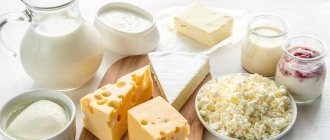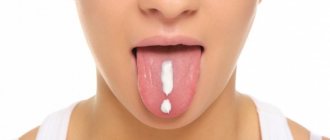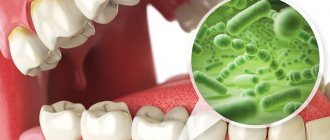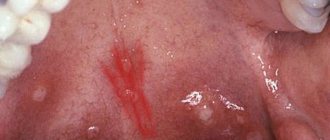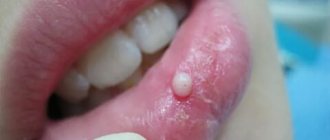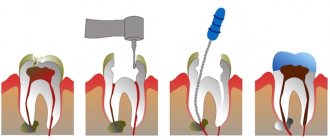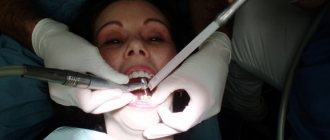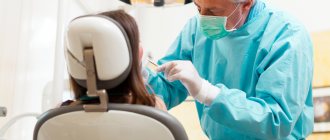*This material is subjective in nature and is not an advertisement and does not serve as a purchase guide. Before purchasing, consultation with a specialist is required. About the selection criteria.
One of the most famous tissue regenerating drugs is Solcoseryl ointment. It perfectly heals wounds, even serious ones, accelerates tissue regeneration processes, improves metabolic processes in the skin, is also used in cosmetology to eliminate unsightly scars, and is also in demand for healing tattoos. In short, the product is very good and effective. But not everyone is ready to buy Solcoseryl ointment. There are cheap analogues, and we will talk about them in this article.
pharmachologic effect
Manufacturer: LEGACY PHARMACEUTICAL GMBH (Switzerland)
Release form: ointment, gel for external use, solution for intramuscular and intravenous administration
Active ingredient: deproteinized hemoderivative of calf blood
Analogs: Metrogyl denta, Levomekol, Methyluracil
Solcoseryl is a medicine with regenerating, wound-healing, angioprotective and antihypoxic properties. The active substance of the drug is rich in low molecular weight organic compounds (amino acids, oligopeptides, nucleosides), which have a beneficial effect on damaged skin tissue.
Under the influence of Solcoseryl the following occurs:
- stimulation of tissue regeneration;
- collagen synthesis in vascular walls;
- transport of oxygen and glucose to cellular structures suffering from hypoxia.
Depending on the degree of damage and the condition of the wound surface, Solcoseryl is used in the form of a gel or ointment.
Pharmacological characteristics of the drug
Solcoseryl is defined in as many as three pharmacological groups:
- antioxidants and antihypoxants;
- regenerative and reparative;
- angioprotective agents and corrective microcirculation in blood vessels.
The drug can have the following effects:
- Stimulates oxygen energy exchange in the cell and oxidative processes, while being a nutritional component.
- Eliminates secondary damage in cells.
- Counteracts fat peroxidation, nitrogen synthesis, removes free radicals;
- Triggers collagen synthesis and cell proliferation.
- Accelerates the transfer of glucose and oxygen to tissues suffering from hypoxia and depleted from lack of nutrients.
Solcoseryl - instructions for use
According to the instructions for use of Solcoseryl, the product is applied to the wound surface, having previously treated it with a disinfectant solution. Purulent wounds or trophic ulcers require surgical treatment of the wound surface before treatment.
Solcoseryl gel is used on fresh wounds with moist secretions 2-3 times a day. The ointment form of the product is applied only to a dry wound surface 1-2 times a day. The combined use of external and parenteral administration of Solcoseryl is indicated for severe trophic ulcers of the skin or soft tissues.
Analogs
According to active substance
A drug with a similar composition is Actovegin. It differs from Solcoseryl in its higher concentration of the active substance.
Levosin
Active ingredients: methyluracil, sulfadimethoxine, trimecaine, chloramphenicol. The drug has anti-inflammatory, anesthetic, antibacterial and necrolytic (aimed at rejecting necrotic masses) properties. It is used to treat infected skin lesions - purulent wounds, difficult-to-heal ulcers, burns.
Release form: ointment. Soak sterile wipes with the product and loosely fill the wound with them. A slightly warmed ointment can be injected into purulent cavities through a catheter. The procedure is carried out daily until complete cleansing of purulent-necrotic particles.
Side effects: skin redness, burning sensation, rash, dermatitis, swelling are possible at the site of application.
Contraindications: hypersensitivity to substances in the drug.
Vishnevsky ointment
Active components – birch tar, xeroform. Castor oil provides better penetration of these substances and warming of tissues. The medicine exhibits antiseptic activity, is a local irritant, and promotes regeneration processes. Intended for the treatment of wounds, bedsores, ulcers, boils, frostbite, burns.
Release form: liniment. Apply a thin layer to the wound surface or apply a gauze bandage with liniment 2 times a day. When treating hemorrhoids, you can make tampons from gauze, soak them in ointment and insert them into the anus.
Side effects: allergic manifestations. Prolonged use may cause skin irritation.
Contraindications: individual intolerance to the components of the product. During pregnancy, lactation, and childhood requires consultation with a doctor.
Posterisan
The active ingredient is an inactivated culture of E. coli bacteria (microorganisms killed and preserved in liquefied phenol). The product is intended for use in the anorectal area. Increases local immunity, accelerates the restoration of the skin and mucous membrane in case of hemorrhoids, anal fissures and eczema, relieves inflammation and itching, and prevents bacterial infection.
Release form: ointment, rectal suppositories. Gently apply the drug to the affected area, rubbing in lightly. Use morning and evening for 5-7 days. In agreement with the doctor, it is possible to change the treatment regimen.
Side effects include allergic reactions: hives, itching, rashes, redness and irritation of the skin.
Contraindications: hypersensitivity, children's age. During pregnancy and lactation requires medical supervision.
Relief (Hemorrhoids)
Active ingredients: phenylephrine hydrochloride, shark liver oil. Constricts blood vessels, reducing blood flow to hemorrhoids, relieves inflammation and swelling. The drug also increases local immunity, stops bleeding and improves the healing of wounds, erosions and fissures in the anorectal area.
Release form: rectal suppositories, ointment. Apply the product to the cleansed affected area up to 4 times a day or introduce it into the anus using an applicator after bowel movements or an enema.
Side effects: hypersensitivity reactions are possible - skin redness, burning, swelling, rash. When using large doses, the development of hypercoagulation is likely - increased blood clotting.
Contraindications: granulocytopenia, thromboembolism, high activity of the blood coagulation system, individual intolerance
Use with caution in case of high blood pressure, cardiovascular diseases, hyperthyroidism, diabetes mellitus, urinary disorders, pregnancy, lactation, under the age of 12 years
Analogues of Solcoseryl
The domestic and foreign pharmaceutical industry produces a large number of analogues of Solcoseryl ointment for the skin, which have similar properties. They are sold to the pharmacy chain in the form of:
- synonyms;
- generics;
- combined means.
A wide variety of Solcoseryl substitutes make it possible to select the most effective means for the treatment of wounds and ulcers of various etiologies.
Table of Solcoseryl analogues with price and country of origin.
| Analogue | Cost in rubles | Manufacturer country |
| Solcoseryl | 410–600 | Switzerland |
| Actovegin | 580–1550 | Austria |
| Metrogyl denta | 250–270 | India |
| Levomekol | 120–140 | Russia |
| Methyluracil | 65–160 | Russia |
| Bepanten | 390–700 | Germany |
| Propolis ointment | 120–150 | Russia |
| Panthenol | 130–320 | Croatia |
| Stellanin | 380–420 | Russia |
| Argosulfan | 390–600 | Poland |
| Contratubeks | 570–960 | Germany |
| Holisal | 280–510 | Poland |
| Vitadent | 110–320 | Russia |
| Dentokind | 580–600 | Germany |
The price of Solcoseryl analogues fluctuates over a wide range. A large selection of these drugs allows the patient to purchase cheap analogs of Solcoseryl, depending on the indications and the condition of the wound surface.
Quattrex
Quattrex helps to increase intellectual and emotional activity, improve memory, and increase concentration. Quattrex is also effective for asthenic and anxiety-neurotic conditions, worries, fear, anxiety, obsessive-compulsive neuroses, psychopathy; Quattrex is used in children to treat stuttering, enuresis, nervous tics; in elderly people, Quattrex is intended for the treatment of insomnia and nighttime restlessness. Prevention of stressful conditions, before operations or painful diagnostic tests. Quattrex is used as an adjuvant in the treatment of alcoholism to stop psychopathological and somatovegetative disorders during withdrawal syndrome. The drug can be used together with generally accepted detoxification agents for the treatment of alcoholic predilection and delirium. It is also prescribed for Meniere's disease, dizziness associated with dysfunction of the vestibular apparatus, and for the prevention of motion sickness. It is used in the complex treatment of women with osteochondrosis of the cervicothoracic spine and menopausal disorders.
Analogues of Solcoseryl ointment
The pharmacological market offers expensive and cheap analogues of Solcoseryl, which are not inferior and sometimes even superior to the main drug in their therapeutic effect.
What can replace Solcoseryl ointment? The most common means are:
- Bepanten – has a regenerating, anti-inflammatory, metabolic effect. This ointment can be used as an analogue of Solcoseryl for children, relieving diaper rash and diaper dermatitis in infants.
- Propolis ointment - restores the affected areas of the skin due to the natural composition of the ointment, which includes minerals, trace elements, amino acids.
- Panthenol – has regenerative and anti-inflammatory properties, stimulating healing and restoration of skin structure in case of injuries, burns of various origins, and some diseases (dermatitis, trophic ulcers).
- Stellanin - has a stimulating effect on tissue regeneration and protects the wound surface from infection, suppressing the progression of the process due to the active iodine included in the product.
- Argosulfan - has an antimicrobial effect, effectively protecting wounds of various etiologies from infection and promoting their speedy healing.
A wide variety of analogues of Solcoseryl ointment allows you to combine products, achieving the best therapeutic effect and reducing the recovery time for damaged skin.
Characteristics of analogues
"Actovegin"
It is an Austrian drug made from the blood of young calves, in release form and action completely similar to the original
But it is important to understand that both of these drugs do not have anti-inflammatory and antibacterial properties, therefore, in the presence of wounds and ulcers, they should be used in combination with antiseptics or other agents that prevent infection
I am often asked whether it is really worth replacing Solcoseryl with Actovegin. In fact, the difference between these drugs is minimal, even in the concentration of the active component.
But sometimes, if one drug is intolerant, another is perceived normally. Perhaps this is a reaction to excipients.
"Adgelon"
A powerful and effective ophthalmic drug with powerful regenerating properties based on proteins. This is fundamentally different from Solcoseryl, in which they are completely absent. Accordingly, Adgelon can provoke severe allergies in people with intolerance to certain types of protein.
The drug stimulates the activity of fibroblasts, preventing the formation of scars, restores damaged cell membranes and even slows down the aging process.
At the same time, there are practically no contraindications to it. However, it is recommended for use for medicinal purposes, not cosmetic.
"Levomekol"
An inexpensive and very effective wound healing agent, which contains antibacterial components. Sometimes this ointment from a Russian manufacturer is recommended for use in the treatment of acne and inflamed acne. It does work in these cases, but should be used under the supervision of a dermatologist and in short courses.
Levomekol does not have rejuvenating and restorative properties, so its use for these purposes, especially on healthy skin, is completely pointless.
In addition, regular use will disrupt the natural microflora and make the face more vulnerable to pathogenic microorganisms.
"Methyluracil"
Also a Russian drug, its pharmacological action is so similar to Solcoseryl that even many doctors consider it an artificial analogue of the original. Naturally, with all the ensuing consequences: a large number of contraindications and an increased risk of allergic reactions.
But the ointment really does an excellent job of stimulating cell division and, when used correctly, significantly improves the condition of the skin. If there are open wounds, they must first be treated with an antiseptic, since there are no anti-inflammatory components in Methyluracil. I am pleasantly pleased with its price - only about 80 rubles per package.
Apropol
The main biological component of this wound-healing agent is the beekeeping product propolis. It has been used for medicinal purposes since ancient times, as it has antiseptic, anti-inflammatory, antifungal properties and is able to enhance immune defense.
The ointment can be classified as a natural stimulant - there are very few chemical components in it. When used externally, it gives an effect similar to Solcoseryl, but somewhat slower.
However, like any natural remedy, it works superficially, is not able to penetrate into the deep layers of the epidermis and significantly influence intracellular processes.
Analogues of Solcoseryl gel
In medical practice, a dosage form of the drug in the form of a gel, which is lighter in texture, is widely used. There are cheap analogues of Solcoseryl gel and more expensive ones, which include:
- Contratubeks – has fibrinolytic, anti-inflammatory, keratolytic effects. Due to the active components, the proliferation of connective tissue, swelling, and pain are blocked. Keloid scars and skin changes after acne or furunculosis are softened.
Early use of Contratubex eliminates the formation of scar tissue, and keloid scars become less noticeable.
Analogs of Solcoseryl eye gel
In ophthalmic practice, cheaper analogues of Solcoseryl in the form of an eye gel, represented by the following preparations, are widely used:
- Korneregel – has regenerative and anti-inflammatory properties. A special feature of this dosage form for the eyes is its viscosity, due to which Korneregel does not penetrate the eyeball, but remains on the damaged area and is not washed off with water.
- Dexpanthenol – has a regenerating, anti-inflammatory and metabolic effect. The analogue has the ability to replenish pantothenic acid deficiency in the area of damaged skin or mucous membrane.
- Hyphenosis - has a protective effect on the corneal area, moisturizing and protecting it in the presence of reduced secretion of tear fluid. The analogue has a high degree of viscosity, which leads to the restoration and stabilization of the optical properties of the tear film.
- Taufon - has a stimulating effect on reparative and regenerative processes in diseases of a dystrophic nature or accompanied by metabolic disorders in the eye tissues.
A large selection of Solcoseryl eye gel analogues allows you to successfully treat various ophthalmological diseases and injuries.
How to choose an analogue?
{banner_banstat8}
If there is a wound, you need to take into account the area affected, the degree of damage, and the presence of a bacterial infection. The doctor must understand what damaging factor led to the negative reaction of the body. If the patient has long-term non-healing wounds, use Solcoseryl. If a bacterial infection occurs, Levomekol is recommended. If the affected area occurs in the eyes and surrounding tissues, Korneregel is prescribed. It is important that all the remedies are not hormonal in nature, but some of them eliminate inflammation.
When choosing therapy, anamnesis is important. The patient may experience an allergic reaction to 1 of the components of the products presented. Then the doctor will advise you to use another drug that does not contain the substance.
When selecting regenerative therapy, the doctor has little choice. If the lesion is local, it is better to use Korneregel or Solcoseryl. For systemic action you will need Actovegin. All products are not cheap, but they have a small number of side effects and contraindications.
Analogues of Solcoseryl injections (ampoules)
The dosage form of Solcoseryl for injection also has a number of analogues with equivalent therapeutic effect. What can replace Solcoseryl injections with, what analogues? The following medications can be included in this list:
- Actovegin - has an active effect on metabolic processes in the body. This substitute for Solcoseryl in ampoules stimulates oxidative metabolism, which leads to an increase in the energy potential of cellular structures and accelerated wound healing.
- Glekomen - has a restorative effect on the corneal epithelium and protects it from the negative influence of external irritants. The analogue stimulates proliferation, that is, the growth of the corneal endothelium and the normalization of water-salt metabolism of its stroma in case of damage and keratopathy.
The use of Solcoseryl analogues in injections for the treatment of diseases and wounds of various locations gives good results and high therapeutic efficacy.
Analogs of Solcoseryl dental abrasive paste
Analogs of Solcoseryl are widely used in dentistry for the treatment of gums and diseases of the oral mucosa.
- Cholisal, an analogue of Solcoseryl gel for gums, has antimicrobial, antifungal, and strong antiseptic effects. The analgesic effect, due to the special structure of the gel and its rapid absorption (2-3 minutes) into the mucous membrane of the mouth and gums, lasts for a long time (from 2 to 8 hours).
- Vitadent – has anti-inflammatory, tanning, antiseptic and hemostatic effects. The plant analogue is effective for inflammation of the mucous membrane of various etiologies of the oral cavity and periodontium.
- Dentokind - has the ability to eliminate swelling, hyperemia and pain. This analogue of dental adhesive paste is used in infants during teething.
- Asepta - has anti-inflammatory and antimicrobial effects, used for gingivitis, stomatitis, periodontitis.
The use of these Solcoseryl dent analogues for the treatment of dental diseases is highly effective in adult patients and children.
What else can replace Solcoseryl and which medication will be better in comparison? You can supplement the list of analogues with the following medications:
- Baneocin;
- Aphytofix;
- Adgelon;
- Glycomene;
- Dicloran denta;
- Vitadent.
A wide range of Solcoseryl analogues for local and external use makes it possible to combine drugs and select them taking into account the type and activity of the pathological process.
What is Dimexide?
Dimexide is an anesthetic drug and is prescribed along with ointment for one reason: to relieve pain and improve the patient’s condition. It has also been proven that Dimexide is absorbed into the skin and blood faster, which cannot be said about Solcoseryl. If you mix the drugs, the absorption will improve.
In order to mix the ointment with the solution, you need to do the following:
- Squeeze the ointment into a clean shallow vase.
- One or two drops of Dimexide are added to the ointment no more
- Mix and apply to the affected area
In general, the drug Dimexide can also be used as an independent remedy, it has an anti-inflammatory effect, the liquid itself is oily and quickly penetrates the skin. The solution is completely safe, doctors say that if you lubricate the wounds in the mouth with the solution, it will not cause any harm, only the medicine will benefit. In general, it is non-toxic, so if you decide to use Dimexide and ointment together, do not be afraid, the mixed composition will not cause harm.
Solcoseryl or Actovegin - which is better, what is the difference
Manufacturer: TAKEDA GMBH (Austria)
Release form: injection solution, tablets, cream, gel, ointment for external use
Active ingredient: deproteinized hemoderivative from calf blood
Both drugs have an equivalent mechanism of action and therapeutic effect, since they have the same active substance. Solcoseryl and its analogue Actovegin stimulate metabolic processes, tissue regeneration, and improve trophism. Despite their similarity, there is a difference between them that can be traced:
- in cost - Solcoseryl is cheaper;
- in release form - Actovegin is produced in tablets, but Solcoseryl is not.
Medicines work well and are used for healing wound surfaces and ulcerative processes of various etiologies. Atovegin will be the best, since it has a gentler effect on the body and is allowed to be used by pregnant women.
Solcoseryl or Metrogyl denta - which is better?
Manufacturer: UNIQUE PHARMACEUTICAL LABORATORIES (India)
Release form: dental gel
Active ingredient: metronidazole, chlorhexidine
Metrogyl denta and Solcoseryl have different active substances and mechanisms of action, but the same therapeutic effect. Solcoseryl will be the best, since it has more dosage forms, which makes it possible to treat dry wound surfaces with secretions.
Metrogyl denta has a smaller range of indications and is used for the treatment of affected oral mucosa.
Solcoseryl or Levomekol – which is better?
Manufacturer: JSC NIZHFARM (Russia)
Release form: ointment for external use
Active ingredient: dioxomethyltetrahydropyrimidine, chloramphenicol
Both drugs are widely used in practical medicine, especially in surgery for the treatment of complicated and uncomplicated wounds of various origins. Levomekol ointment will be the best for purulent wounds in the inflammation phase (boils, bedsores, purulent pimples).
Under the influence of the analogue, liquid secretion is eliminated from the wound surface and tissue is rapidly regenerated. For scratches and 1st-2nd degree burns, it is better to use Solcoseryl.
Solcoseryl or Methyluracil – which is better?
Manufacturer: JSC BIOCHIMIC (Russia)
Release form: tablets, ointment, suppositories
Active ingredient: dioxomethyltetrahydropyrimidine
Both medications have regenerating properties, but differ in their mechanism of action. When comparing them, Solcoseryl will be better than Methyluracil, since it has a minimum of side effects and contraindications, exceeding the number of dosage forms.
A large number of Solcoseryl analogues is an additional opportunity to select appropriate medications for the treatment of wounds and ulcers. Fast and effective regeneration of the damaged area of the skin can prevent the development of inflammation, accelerating the process of restoring the integrity of the skin.
What is Solcoseryl?
Solcoseryl is a paste for topical application manufactured by MEDA Pharmaceuticals. The average price is 500 rubles, but can reach up to 1000 rubles. The main active ingredient is a standardized deproteinized dialysate, lauromacrogol. Due to the components, pharmacological actions are formed:
- regeneration of damaged cells and tissues;
- supply of oxygen and nutrients to the lesion;
- increased ATP synthesis;
- proliferation of vascular endothelial cells leading to angiogenesis;
- re-growth of capillaries and vessels in the lesion after ischemia;
- increase in collagen, epithelium, wound healing;
- protection of cells from negative environmental factors, free radicals;
- stabilization of the damaged membrane.
Pharmacokinetics have not been fully studied. Since the medicine is applied only locally, there is no effect on internal organs. It is indicated for use in cases of inflammation and damage to the following tissues and organs:
- language;
- gums and surrounding soft tissues;
- tooth socket;
- skin with the development of pemphigus, erysipelas;
- area around the lips due to jams, aft.
In dentistry, adhesive dental paste is used. The dosage is selected individually. The course of application can be long. The product is approved for use by children, adults, and women pregnant or lactating.
Levomekol quickly and efficiently copes with heat rash in adults. The external agent accelerates skin healing, eliminates irritation, swelling, redness, and prevents infection of rashes by pathogenic microorganisms. Read more in the article: “levomekol ointment for the treatment of prickly heat.”
Side effects and contraindications
The drug is contraindicated extremely rarely. It is not recommended for use if you have an individual intolerance, especially to parabenzoic acid. Allergic reactions may occur. The drug has the following side effects:
- change in taste;
- swelling in the application area;
- allergic reactions.
If negative effects occur, the medicine is immediately discontinued. They are not waiting for their termination. When using the paste, doctors give the following recommendations and special instructions:
- It is prohibited to apply the product to the area of remote painters;
- not recommended for resection of the apex of the tooth;
- since the composition does not contain antibacterial substances, in case of infection additional use of antibiotics and antiseptics will be required;
- The medicine is approved for use in children and elderly patients; there are no age restrictions.
If the patient’s body is able to heal wounds quickly on its own, you can do without Solcoseryl. It is recommended if the resulting damage causes severe discomfort or does not heal for a long time. There have been no cases of overdose, but it is better to apply the drug in a thin layer.
Constipation is a common problem for residents of large cities. An unpleasant illness can be treated with medications and dietary adjustments. Features of the drug Duphalac is one of the most frequently prescribed drugs. Read more in the article: “how to take Duphalac for adults.”
Application in cosmetology
The product is used not only for injuries, aphthae, and long-term non-healing wounds. Solcoseryl, as an anti-wrinkle ointment for the face, is often used in cosmetology. As the skin ages, regeneration slows down and its moisturizing effect decreases.
With timely use of Solcoseryl for the face and neck, the quality of the epidermis improves. It renews itself much faster and is less susceptible to damage due to adverse environmental factors or changes in the condition of internal organs. The number of acne decreases.
Solcoseryl renews the cellular composition of the epidermis, but is not able to completely eliminate the risk of developing wrinkles during skin aging.
Cosmetologists give recommendations for the use of ointment only as a course. When it is completed, they switch to a regular moisturizer against skin aging and the appearance of wrinkles.
After 3-4 months the course is started again. The drug is combined not only with moisturizing cream, but also with cosmetic procedures. For example, the introduction of hyaluronic acid, electrophoresis, peeling and other methods.
Questions
Solcoseryl ointment or gel – which is better, what’s the difference?
The texture of the gel is lighter than ointment and does not contain fatty inclusions. It will be the best, as it is able to penetrate deeper into the tissue and have a faster healing effect.
Solcoseryl - hormonal ointment or not?
No, Solcoseryl ointment is not hormonal.
Solcoseryl gel or ointment – which is better for the face?
In cosmetology, both Solcoseryl gel and ointment are used for the face.
What is better for wrinkles: Solcoseryl gel or ointment?
Solcoseryl Ointment is used for wrinkles.
Solcoseryl - hormonal or not?
No, Solcoseryl gel is not hormonal.
Injectable form of the drug
The use of Solcoseryl solution for hemorrhoids is not used so often. This form of the drug not only gives local results, but also affects the very cause of the disease. The product is administered intravenously or intramuscularly. Its course use leads to an improvement in the condition of the vascular walls, normalization of blood circulation in the pelvis, and stimulation of the regenerative abilities of tissues.
The treatment regimen is determined by the doctor and most often takes the form of one of the following approaches:
- The product is administered intravenously, pre-diluted in saline or 5% glucose. Manipulations are carried out three times a week. The duration of the course is determined by the doctor.
- The drug is administered daily in the form of intramuscular injections. The drug is also first diluted in glucose or saline. Therapeutic effects can last up to 4-5 weeks.
You should not count on the fact that with the help of Solcoseryl alone you will be able to completely and quickly get rid of hemorrhoids. With all its advantages and strengths, the product is only an auxiliary means of complex therapy of the disease. People with a chronic form of the disease are recommended to use the drug for preventive purposes from time to time, this will reduce the likelihood of relapse.
During the recovery period after surgical removal of hemorrhagic nodes, the use of the composition will accelerate tissue healing and prevent new stretching of the vascular walls. All of the above manipulations should be carried out only under the supervision of a doctor against the background of regular monitoring of positive dynamics.
During the recovery period after surgical removal of hemorrhagic nodes, the use of the composition will accelerate tissue healing and prevent new stretching of the vascular walls. All of the above manipulations should be carried out only under the supervision of a doctor against the background of regular monitoring of positive dynamics.

